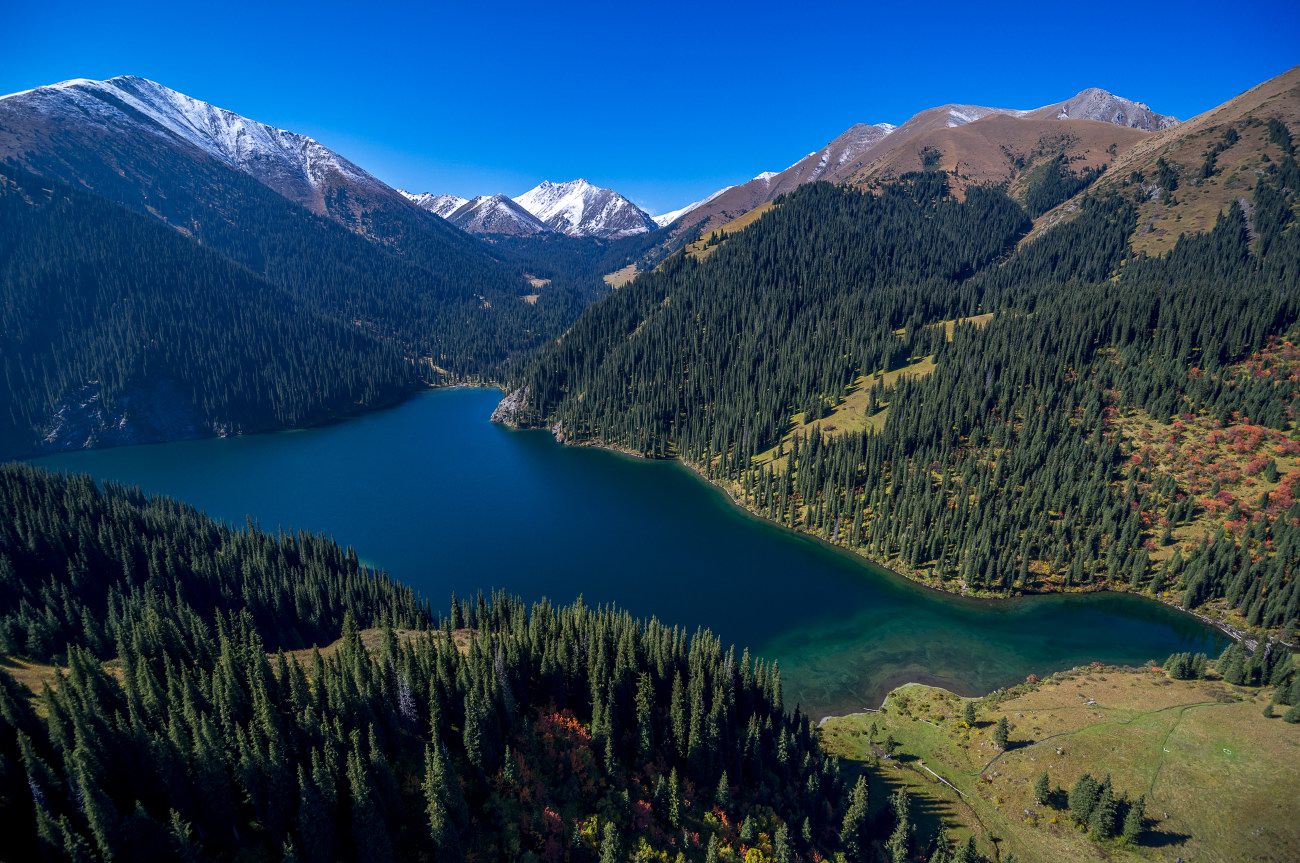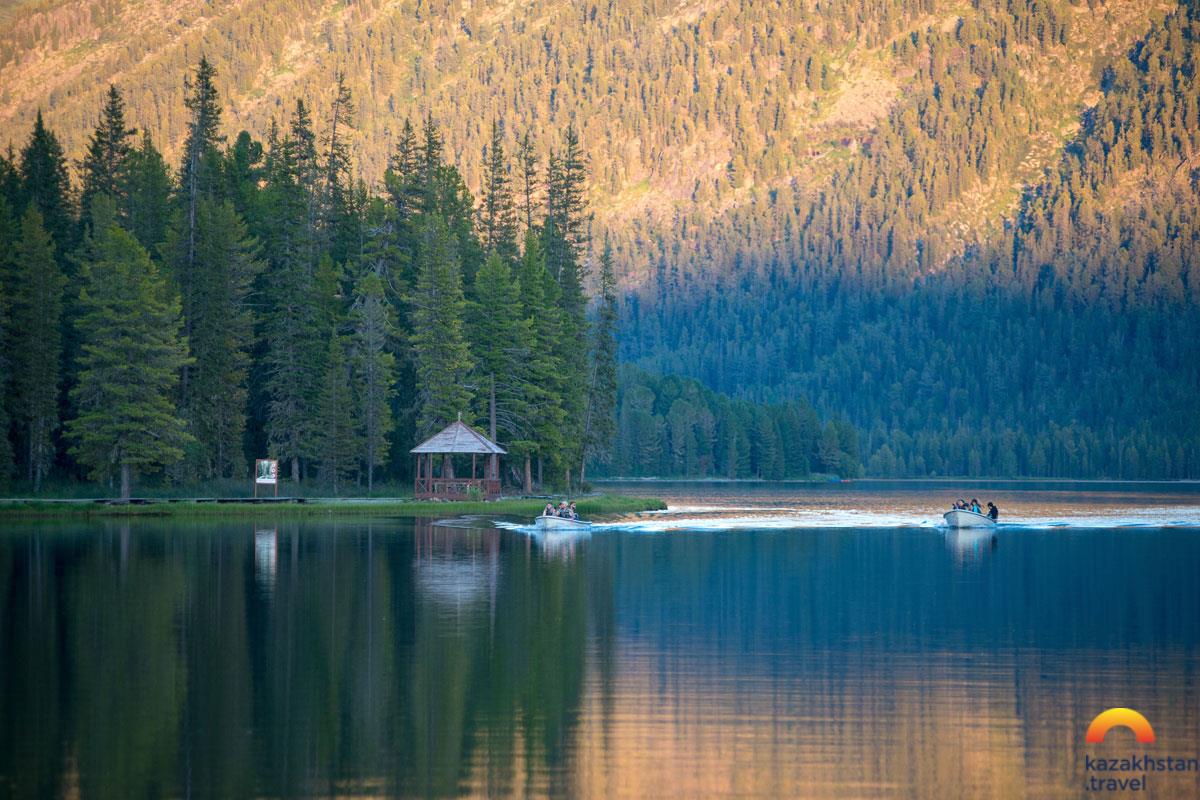NUR-SULTAN – The tourism sector is still reeling from the consequences of the COVID-19 outbreak. Most international experts do not expect the global tourism industry to rebound to pre-pandemic levels until 2023. The Astana Times recently spoke to the Kazakh Tourism national company about the tourism industry, and about plans for the year ahead.

Kolsai Lake is among the favorite destinations around the Almaty city located in the Northern Tien Shan nearly 300 km from Almaty.
What was the last year like for the tourism industry? Is there any data on the sector’s revenues?
Tourism is the hardest-hit industry thanks to the coronavirus pandemic, both in Kazakhstan and around the world. The imposed quarantine restrictions, border closures, and suspension of air travel have significantly affected business plans in this segment and travel services.
The losses of the global tourism industry last year amounted to $4.5 trillion and will reach $4.7 trillion in 2020. The contribution to the GDP fell by a staggering 49.1 percent from 2019. This compares to a 3.7 percent drop in the global economy in 2020.
The tourism sector’s share of global GDP fell from 10.4 percent in 2019 to 5.5 percent in 2020 due to continued movement constraints.
Sixty-two million jobs were lost in the sector in 2020, an 18.5 percent decline, leaving just 272 million jobs worldwide, down from 334 million in 2019.
Domestic tourist spending is down 45 percent, while foreign tourist spending is down an unprecedented 69.4 percent.
Before the pandemic, key indicators in our industry showed steady growth. For example, the inbound flow increased annually by 12-13 percent, and the growth in domestic flows was nearly the same. In 2020, we have lost almost 80 percent of the external and almost 50 percent of the internal tourist flow, and this amounts to almost 200 billion tenge (US$465.2 million).

Rakhmanovskie Kluchi (Rakhman Keys) is a legendary East Kazakhstan resort known for its radon springs.
Amid border closures, the interest of citizens in domestic tourism has increased. What measures are being taken to develop domestic tourism, as well as to create businesses in this area?
This year is full of news in tourism, especially in the past months. New tourist facilities in the country are being opened, changes and additions are made to the law on tourism, new ideas and projects are being proposed.
The main news for the tourism business is certainly the second hearing of the new draft law that brings amendments on tourism activities and the measures that were included there, namely:
– subsidizing tour operators’ costs for each foreign tourist to the amount of 15,000 tg (US$35);
– reimbursing 25 percent the cost of purchasing equipment and machinery for ski resorts;
– collecting a tourist fee for foreigners (Bed Tax);
– 100 percent subsidy for the cost of the ticket, included in the tourist product, for air travel of minors (Kids Go Free);
– ten percent reimbursement of the costs of construction, reconstruction of tourist facilities;
– 25 percent reimbursement of expenses for the purchase of buses for tourists;
– partial refund of the costs for the construction of roadside service facilities to the tune of 10 percent;
– subsidizing a portion of the cost of business entities to maintain sanitary and hygiene facilities to the tune of 83,300 tenge (US$195).
These are long-awaited changes, primarily designed not only to support but also to bring the domestic tourism industry to a qualitatively new level – to provide a wide range of opportunities for the tourism business and significantly improve tourism infrastructure.

Singing dunes, the name they got for sound from sand in dry weather, similar to organ playing.,are located in the Altyn Emel National Park nearly 185 km from Almaty.
Which regions are the most promising at the moment?
In May 2019, Kazakhstan adopted the state program for the development of the tourism industry for 2019-2025 that defined the top ten sights.
Taking into account the vast territories of our country, to ensure rational and efficient spending of budget funds on the necessary engineering and communication infrastructure, a tourism map was developed identifying these top ten areas, where efforts will be directed as a matter of priority.
These are the lakes of Alakol and Balkhash, the resort areas of Bayanaul, Burabay, Mangistau, Imantau-Shalkar, Nur-Sultan, Turkestan, Baikonur and the Almaty mountain cluster.
In selecting the areas, we focused on their uniqueness as a tourist attraction and the potential growth of tourist flow. Also, their historical and cultural significance was taken into account, such as monuments listed by UNESCO or those included in the list of the Great Silk Road, as well as sacred objects included by the Rukhani Zhangyru program (translates as Modernization of Kazakhstan’s identity).
This year this work will continue. 70 projects worth 71.8 billion tenge (US167.7 million) will be implemented in the country’s main resort destinations. Availability of infrastructure allows us to attract investors for the construction of high-quality tourist objects. As a result, 92 projects were commissioned last year due to private investments.
As a whole in 2020, we managed to ensure 1.3 times growth of investments to the fixed capital in tourism compared to 2019. This year investments will be the driver of industry development. Implementation of 115 projects with total investments amounting to 1.1 trillion tenge (SU$2.5 billion) will be continued.

Charyn Canyon is also located near the city of Almaty.
Could you tell us about the types of tourism that have the most potential and appeal at the moment?
In recent years, Kazakhstan is increasingly positioned as an ecological destination on the map of international tourism and right now we have a unique opportunity to develop this area.
The nature of Kazakhstan itself is still only being discovered, where apart from well-known large sights, absolutely unique and new objects such as the Tekes waterfall, the pink lakes in the Akmola and Pavlodar regions, the pink flamingos’ camps near Karakol lake in the Mangistau Region are making their way onto tourism maps.
As you know, Kazakhstan has many natural sites, including 13 national parks. What is interesting, the area of specially protected natural sites in Kazakhstan is almost 1/10 of the area of the country.
Each tourist destination in terms of natural elements is not similar to others. Therefore, we have identified the top 10 most prepared tourist destinations and have already begun their promotion. Particularly important attention is being paid to improving the soft infrastructure in the national parks.
The current situation with the coronavirus has made it clear that there is a great need to create conditions for organizing individual holidays, such as agrotourism, car tourism, including caravanning. And these tasks are quite achievable, because Kazakhstan, with its vast territory, low population density (6.9 people per square meter or 1.5 hectares of land per person), and abundance of natural parks, can position itself as a country with natural “social distancing”, which is very relevant right now.

Pink flamingos are frequent visitors in Kazakhstan choosing the nation’s territories as a temporary place as part of their migration.

